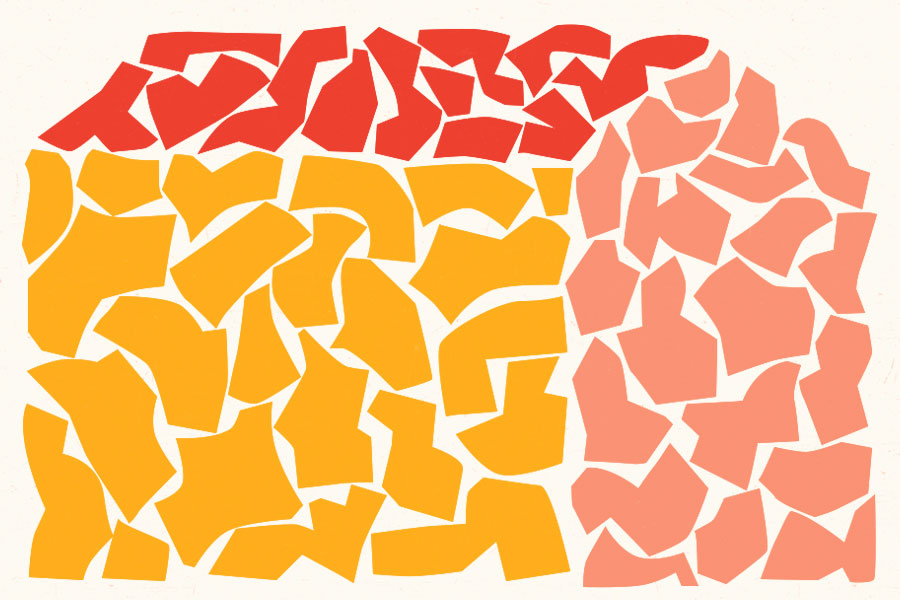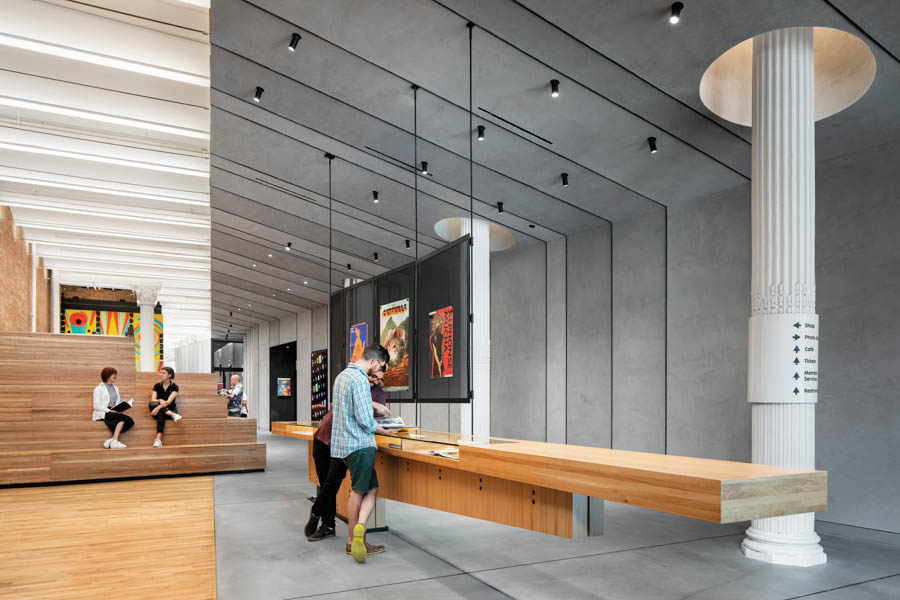
Design for the Next Life
Assume that any space you design will eventually be deconstructed and renovated. Build in approaches to make that process as low-impact as possible:
Dematerialize
In every application, use the lowest quantity of the product or material that can fulfill the purpose. Next in priority, prefer products or materials with the lowest number of components or layers. Pull back on the complexity of walls and surfaces.
Decarbonize
Prefer carbon-neutral products wherever available. Prefer products that are manufactured with 100 percent renewable energy, and where manufacturing waste is reused. (Resources: mindful Materials, EC3, Declare, Cradle to Cradle)
Mandate Recyclable and Reusable Components
Set a target for a minimum percentage of recycled content for projects overall or for most-specified product categories. Set a target for a minimum percentage of reusable materials and structural elements. If you have to specify new acoustic panels and carpet tiles, specify products with take-back programs.
Place Utilities Strategically
Utilities are the most reused elements. Put distribution points of utilities at locations where they can serve multiple zones and multiple generations of the space.
Be Prudent With Aesthetics
Stay away from trends and prefer timeless aesthetics for substantial, high-volume, high-value, and permanent items. Guide clients on this connection between aesthetics and carbon footprint. (Resource: BIFMA Level provides a useful framework for selecting durable furniture.)
Design to Refurbish
Pick materials and products that can be resurfaced, reupholstered, or refinished. Partner with manufacturers to develop products that can be refaced or updated for the second life of a space.
Prefer Adaptable Strategies
Reduce the amount of permanent fixtures and construction, choose adaptable elements. Where possible, use furniture instead of architectural elements to delineate space and support programs.
Design for Deconstruction, not Demounting
Demountable products don’t always get reused the way they are intended to be. Design for deconstruction instead, so products and materials can be broken down into components and different end-of-life strategies can be applied that are appropriate to each component.
If you have feedback on the Climate Toolkit for Interior Design, write to: [email protected]




